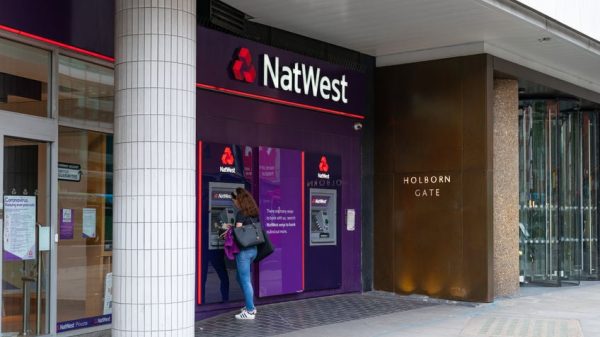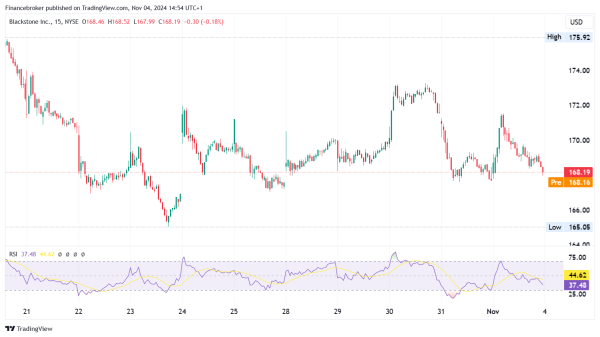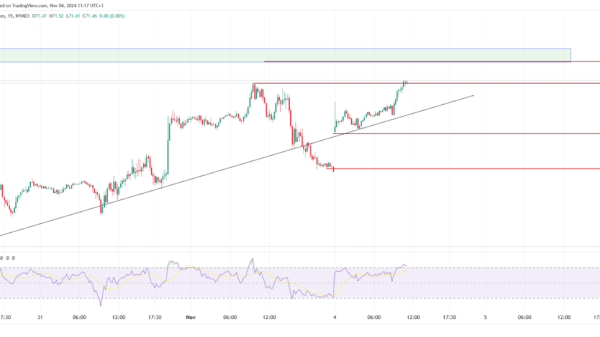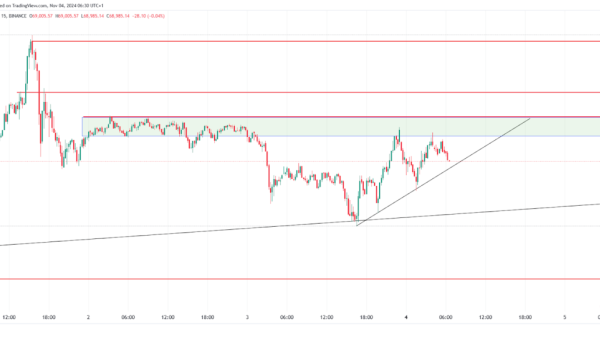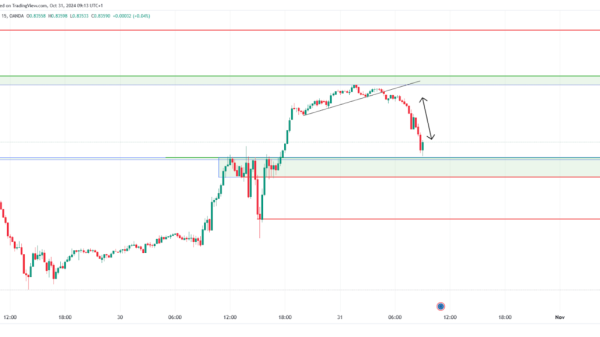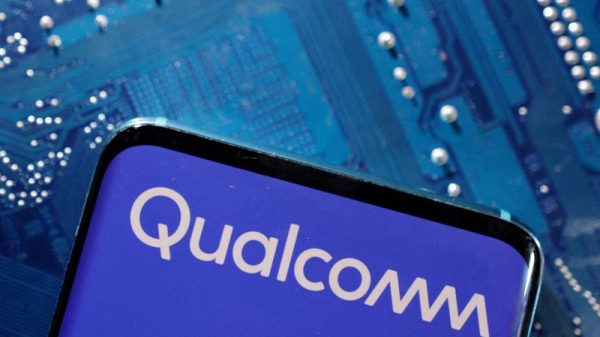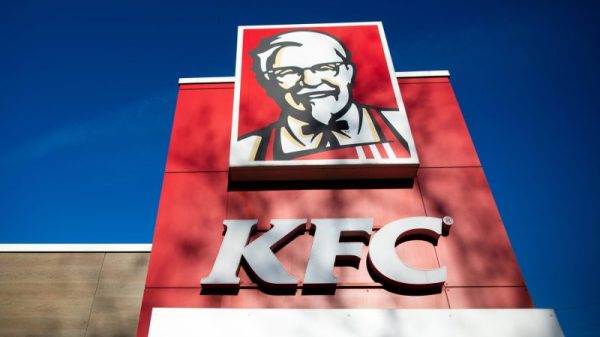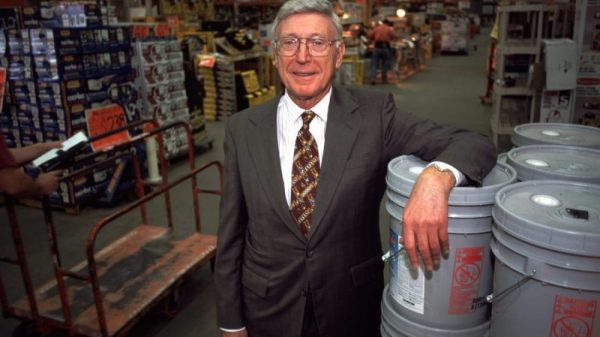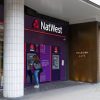
Amicus Therapeutics (NASDAQ: NASDAQ:FOLD) has reported a significant increase in revenue for the third quarter of 2024, with a 37% year-over-year growth, reaching $142 million. Driven by strong sales of its lead product Galafold, which saw a 19% increase in global revenue, the company has raised its full-year revenue guidance to 30%-32%.
The earnings call highlighted the company’s effective management of operational expenses, maintaining a non-GAAP profitability of $45 million for the first nine months. Amicus Therapeutics is optimistic about the future, expecting to double sales in 2025, with plans to expand into new markets and focus on strategic growth in various rare disease areas.
Key Takeaways
- Amicus Therapeutics’ Q3 revenue climbed to $142 million, a 37% increase year-over-year.
- Galafold’s global revenue reached $120 million, prompting an upward revision of growth projections.
- Licensing agreement with Teva secures Galafold’s U.S. market exclusivity until January 30, 2037.
- Pombiliti and Opfolda’s revenue rose to $21 million in Q3, with an increase in full-year guidance.
- The company targets non-GAAP profitability by the end of the year and anticipates doubling sales by 2025.
Company Outlook
- Amicus Therapeutics aims to increase patient access and reimbursement in Europe.
- Plans to acquire late-stage or commercial assets within the next 12 to 24 months.
- Prioritizes financial discipline while aiming for top-line growth and exploring new markets, including Japan.
Bearish Highlights
- Recent patient additions have slowed, with only 17 new patients since July.
- Ongoing litigation regarding Galafold’s intellectual property, though the company remains confident in its case.
Bullish Highlights
- Strong commercial execution and positive trends in Pombiliti prescribing, particularly in the U.S., Spain, and Germany.
- Over 60% of Galafold’s market is amenable, with potential to reach 85-90% in mature markets.
- Non-GAAP net income reported at $31 million, compared to a loss in the previous year.
Misses
- No specific misses were discussed in the earnings call summary provided.
Q&A Highlights
- The Japanese market for Pompe disease is relatively small, but significant opportunities remain in diagnosed but untreated populations.
- The FDA’s recent feedback on accelerated approval for Fabry disease is seen as promising.
- The competitive landscape is evolving, with Amicus capturing over two-thirds of patient switches from Nexviazyme.
Amicus Therapeutics continues to strengthen its position in the rare disease market, showcasing robust financial growth and strategic planning for future expansion. While challenges such as slowed patient addition rates and ongoing litigation remain, the company’s focus on financial discipline, market penetration, and clinical pipeline advancement provide a solid foundation for continued success. With a clear strategy and strong product performance, Amicus is well-positioned to achieve its goals and deliver on its commitment to patients with rare diseases.
InvestingPro Insights
Amicus Therapeutics’ (NASDAQ: FOLD) strong financial performance in Q3 2024 is further supported by data from InvestingPro. The company’s impressive revenue growth of 29.98% over the last twelve months aligns with the reported 37% year-over-year increase in Q3. This growth trajectory is expected to continue, as InvestingPro Tips indicate that net income is projected to grow this year, and analysts predict the company will be profitable in the current fiscal year.
The company’s gross profit margin of 89.88% underscores its operational efficiency, particularly in managing costs associated with its lead product Galafold. This aligns with an InvestingPro Tip highlighting Amicus’ impressive gross profit margins, which contribute to its strong financial position despite current unprofitability.
Amicus’ market capitalization of $3.34 billion reflects investor confidence in its growth potential and strategic initiatives. The stock has shown resilience with a 3-month price total return of 18.11%, indicating positive market sentiment following the company’s recent performance and raised guidance.
While Amicus is not currently profitable over the last twelve months, the company’s focus on financial discipline and its path to non-GAAP profitability by year-end are promising signs. The InvestingPro data shows that liquid assets exceed short-term obligations, suggesting a solid financial foundation to support future growth and potential acquisitions.
For investors seeking a deeper understanding of Amicus Therapeutics’ financial health and growth prospects, InvestingPro offers 10 additional tips, providing a comprehensive analysis to inform investment decisions.
Full transcript – Amicus Therapeutics Inc (FOLD) Q3 2024:
Operator: Good morning, ladies and gentlemen. And welcome to the Amicus Therapeutics Third Quarter 2024 Financial Results Conference Call and Webcast. At this time, all participants are in a listen-only mode. Later, we will conduct a question-and-answer session and instructions will follow at that. As a reminder, this conference call is being recorded. I would now like to turn the conference over to your host, Mr. Andrew Faughnan, Vice President of Investor Relations. You may begin.
Andrew Faughnan: Good morning. Thank you for joining our conference call to discuss Amicus Therapeutics’ third quarter 2024 financial results and corporate highlights. Leading today’s call we have Bradley Campbell, President and Chief Executive Officer; Sebastien Martel, Chief Business Officer; Dr. Jeff Castelli, Chief Development Officer; and Simon Harford, Chief Financial Officer. Joining for Q&A is Ellen Rosenberg, Chief Legal Officer. As referenced on Slide 2, we might make forward-looking statements within the meaning of the Private Securities Litigation Reform Act of 1995 relating to our business as well as our plans and prospects. Our forward-looking statements should not be regarded as representation by us and any of our plans will be achieved. Any or all the forward-looking statements made on this call may turn out to be wrong and can be affected by inaccurate assumptions we might make or by known or unknown risks and uncertainties. You are cautioned not to place undue reliance on any forward-looking statements, which speak only to the date hereof. All forward-looking statements are qualified in their entirety by the cautionary statement. And we undertake no obligation to revise or update this presentation and conference call to reflect events or circumstances after the date hereof. For a full discussion of such forward-looking statements and the risks and uncertainties that may impact them, we refer you to the forward-looking statements and risk factors section on our annual report on Form 10-K for the year ended December 31, 2023 and the quarterly report on Form 10-Q for the quarter ended September 30, 2024 to be filed with the Securities and Exchange Commission today. At this time, it is my pleasure to turn the call over to Bradley Campbell, President and Chief Executive Officer. Bradley?
Bradley Campbell: Great. Thank you, Andrew. And welcome everybody to our third quarter 2024 conference call. I’m pleased today to highlight what has been a very successful nine months of the year across our global business and in particular another very strong quarter in Q3. In this time, we’ve continued to build on our top line revenue growth momentum, putting us well on our way to our first full year of non-GAAP profitability while also advancing our mission of bringing hope to individuals and families affected by rare diseases. As we did in this morning’s press release, let me just highlight several key points here. First, we continued our excellent commercial execution and delivered total revenue of $142 million in the quarter, representing 37% growth year-over-year or 36% on a constant currency basis. This strong performance has led us to increase our total revenue guidance for the full year to 30% to 32% from 26% to 31% previously. At the product level, Galafold continued its outstanding performance with $120 million in global revenue in the quarter, which represents 19% growth from last year on a constant currency basis. On a year-to-date basis, Galafold revenue growth was 18% year-over-year at constant exchange rates coming in at the high end of our guidance for this year. We continue to observe strong trends across our key performance indicators for Galafold in all key geographies in the quarter, including continued demand through new patient starts from both switch and naive populations in all of our leading markets and sustained compliance and adherence rates of over 90%. All of this, of course, is against the backdrop of significant growth in people diagnosed with and treated for Fabry disease. We are extremely pleased by the significant difference this medicine continues to make for people living with Fabry disease with amenable variants in countries around the world, and we see it serving as the foundation of our business for the next decade and beyond. Based on Galafold’s sustained performance, we’re also increasing our full year 2024 revenue growth guidance range for a third time this year. We started the year with a growth range of 11% to 16% and now we’re projecting Galafold growth of 16% to 18%. An important update we announced during the quarter as well was the license agreement with Teva, one of the lead parties in our ongoing IP litigation. This agreement allows Teva to market a generic version of Galafold in the United States beginning on January 30, 2037. This settlement reinforces our high confidence in the strength of our case against the remaining litigants as well as the overall strength, breadth and depth of our IP estate, and this is a huge milestone for Amicus. It represents a major step forward in ensuring Amicus can continue to support the Fabry community with Galafold for many years to come. Second, let me highlight the continued and strong global commercial launch of Pombiliti and Opfolda, our novel therapy for late-onset Pompe disease. Pombili and Opfolda, of course, has continued to be a huge driver of growth for us this year and as we’ve mentioned, our number one focus continues to be maximizing the number of patients on therapy by year end. Therefore, it’s great to report that the rate of new commercial patients coming on to Pombiliti and Opfolda in 2024 continues to progress exceptionally well. As of the end of October, there were 203 people living with late onset Pompe disease treated or scheduled for treatment and we continue to see the breadth and depth of prescribers increasing across our markets. We’re very pleased with the demand globally for this new therapy and consistently hear inspiring anecdotes from healthcare professionals around the world and how their patients are responding to Pombiliti and Opfolda, which will help keep fueling the launch throughout the remainder of this year and beyond. We’re continuing to build momentum in our launch countries with strong switch dynamics in the US, Europe and the UK as well as seeing great uptake in the naive patients in the market outside of the United States. And we’re also making significant progress on the reimbursement front globally. This includes moving patients more quickly through the insurance process in the United States as we’ve anticipated. And for the remainder of the year and into 2025, we will focus on increasing patient access as we gain reimbursement and launch in additional countries throughout Europe. On the regulatory front, we’re continuing to make great progress on expanding commercial access to Pombiliti and Opfolda through our multiple regulatory submissions as well. Given the strong global launch for the full year 2024, we are now raising our full year global sales guidance to $69 million to $71 million in Pombiliti and Opfolda, which will be a significant contributor to our growth. This sets us on a great course to achieve our ambition for Pom Opf to become the new standard of care for this devastating disease. We’re incredibly pleased to be providing a real choice for people living with Pompe disease and challenging therapeutic expectations for both physicians and their patients. Finally, as we continue our excellent commercial execution across both therapies, we’re pleased to share that we are reducing our non-GAAP operating expenses guidance as we continue to traditionally manage our expenses. Throughout the first nine months of the year, we’ve exceeded our financial expectations which, as I mentioned in this morning’s press release, has resulted in achieving our full — our goal of full year non-GAAP profitability as we close the third quarter. And finally, let me touch on Slide 4, our key strategic priorities for the year. Again, sustaining double digit Galafold revenue growth. And as I mentioned, we’ve raised the expected annual growth rate of Galafold to 16% to 18%; continuing to successfully execute multiple commercial launches of Pombiliti and Opfolda; and again, we’ve raised our guidance there as well, advancing ongoing studies to support medical and scientific leadership in Fabry disease and Pompe disease; and finally, maintaining a strong financial position as we carefully manage our expenses and investments to achieve non-GAAP profitability for the full year. With that, let me now hand the call over to Sebastian, who can further highlight our commercial performance. Sebastian?
Sebastien Martel: Thank you, Bradley. Good morning to everyone on the call. I will start by providing you with more details on our Galafold performance for the quarter. On Slide 6, for the third quarter 2024, Galafold reported revenue reached $120 million, driven by strong patient demand, particularly from our leading markets. We ended the third quarter with more than 60% of the global market share of treated Fabry patients with amenable mutations. We’re very pleased to see that prescribers continue to position Galafold as the treatment of choice for Fabry patients with amenable variants. The great news is that there’s still many more potential patients eligible for our therapy. Turning to Slide 7. Our results in the third quarter highlight the strength of our global commercial efforts. The demand for Galafold globally continued to be strong with patients added in all major markets, delivering operational growth of 19% over the same period in 2023 at constant exchange rates. Our leading markets such as the US, the UK, top EU countries and Japan remain the biggest drivers of patient demand and gives great confidence in the growth this product has over the long term. Within the global mix, which is about 40% switch and 60% naive, we’re seeing stronger uptake in naive populations. So we continue to achieve high market shares in a country where we’ve been approved the longest. There’s still plenty of opportunity to continue to switch patients over to Galafold and to keep growing the market as we penetrate the diagnosed untreated and newly diagnosed segments. All of that is underpinned by sustained compliance and adherence rates that continued to exceed 90%, reiterating our belief that those patients who go on Galafold predominantly stay on Galafold. On Slide 8, we know that there is a significant patient demand for Galafold and that the segment of the global Fabry market made of patients with amenable variants have the potential to reach up to $1 billion in annual revenue by the end of the decade. We anticipate sustained growth in 2024 and beyond to be driven by several key drivers. First, the Fabry market is growing robustly with a significant portion of growth coming from finding new patients and reaching the diagnosed and treated population. We’ve seen many new patients going to treatment through family screening and we continue to see increased patient identification through ongoing medical education and support of novel screening initiatives. Fabry remains one of the most underdiagnosed rare disease. So the more people that can be identified the more people may benefit from Galafold. We’re also seeing many diagnosed untreated patients transition to treatment as the need for earlier treatment, especially in females, becomes better appreciated. The other piece is continuing to drive Galafold’s market share of treated amenable patients through continued commercial execution. As noted, Galafold currently has more than 60% of the global amenable market. We were seeing in our most mature markets that we can reach up to about 85%, 90% of market share. So we know that there’s the potential to reach those levels in the global market share as well. And again, all these efforts are supported by solid compliance and adherence rates through physician and patient education and support programs. Additionally, we’ll continue to make progress on expanding Galafold in new markets and extending the labels. Importantly, on the IP front, as Bradley mentioned, we recently announced in October that we reached a settlement agreement with Teva Pharmaceuticals in the ongoing protection of our US intellectual property for Galafold. Amicus entered into a license agreement with Teva granting them a license to market its generic version of Galafold in the US beginning on January 30, 2037. We’re very pleased by this outcome as it reinforces our confidence in the strength of our case against the remaining litigants as well as the overall strength, breadth, depth of our IP estate. We now have orphan drug exclusivity in the US and Europe, in addition to our 62 Orange Book listed patents, 46 of which provide protection into 2038 and beyond, including 15 — this gives us the opportunity to provide access to Galafold globally for a long time to come and we intend to continue to protect and enforce our broad intellectual property rights. Looking ahead, we expect steady double digit growth for Galafold throughout 2024. And we remain confident that with our strong IP protection Galafold has a long runway well into the next decade. Turning now to Pompe disease on Slide 10. We outlined our global launch progress with Pombiliti and Opfolda. For the third quarter 2024, Pombiliti and Opfolda reported revenue reached $21 million. This represents an increase of 33% on compared to the second quarter 2024 and provides a strong foundation for the remainder of the year. In the US, we continue to see a majority of patients switching from Nexviazym, about 68% and the remaining from Lumizyme. This means we’re switching patients proportionately from both products. We’re also seeing a broadening and deepening of prescriptions with more sites coming online and multiple new prescriptions from physicians coming in over Q3. Outside of the US, we’re seeing patients from all three segments, some switching from Myozyme and from Nexviazyme at a proportional rate to the respective market shares and some from the naive population exactly what you want to see at this stage in the launch. Given our solid commercial execution in the first nine months of 2024, we’re pleased to increase our full year revenue guidance from $62 million to $67 million, to $69 million to $71 million for Pombiliti and Opfolda. Moving to Slide 11. We’re very pleased with the launch momentum through the first nine months of the year. As Bradley mentioned, there are about 203 patients that have been treated or are scheduled for treatment as of late October, that’s about 196 patients who have been treated. We remain very satisfied with ongoing demand for this therapy. Our launch has leveraged our highly experienced cross functional teams and we’ve had great outreach with key opinion leaders. We’re seeing an increase in the depth and breadth of prescribers across all markets indicated to us that physicians are having positive experiences with the therapy and are gaining greater confidence to use it again in patients. All core treating centers are engaged and we continue to receive very positive feedback from HCPs and other stakeholders as to our business approach, our support and our patient focus. Finally, an important metric to track is our progress with access and reimbursement. We have a highly experienced team interacting in positive conversations with payers to demonstrate the value of Pombiliti and Opfolda. In the US, the largest players have put Pombiliti and Opfolda onto their respective formularies and we’ve also seen strong acceptance by Medicare, Medicaid. The overall time from prescription to infusion is now down to around 60 days with pay approvals happening on the 30 days. We believe this will continue to improve. Today, we’ve launched in Germany, in the UK, the US, Australia and Spain, and we’re pleased to announce that we now have pricing and reimbursement in the Czech Republic in our sixth launch country. We remain in active pricing and reimbursement discussions with additional major European markets. We continue to be focused on securing broad patient access throughout Europe and we anticipate further reimbursement agreements over the next six to nine months. This will be a key part in driving the commercial uptake in new countries next year. Overall, we’re very pleased thus far with the launch of Pombiliti and Opfolda across the first wave of countries in 2024. Our focus is on maximizing the number of patients on therapy by year end. The strength of our clinical data, the depth of experience and talent we have at Amicus gives us great confidence in our ability to make a very real difference for people living with Pompe disease. With that, let me now hand the call over to Jeff to highlight our clinical and regulatory progress.
Jeff Castelli: Thank you, Sebastian. And good morning. On Slide 12, we outline how we continue to grow the body of evidence for Pombiliti and Opfolda through our ongoing clinical studies and registry as we continue to execute on expanding commercial access through regulatory submissions. In addition to the regulatory dossiers already under review in Canada and Australia, we are pleased to announce that we recently submitted a Japan New Drug Application or JNDA, for Pombiliti and Opfolda to the Ministry of Health, Labor and Welfare in Japan. For the younger Pompe community, we continue to enroll the ongoing open label ZIP study for children living with late onset Pompe disease in the open label Rosella study for children living with infantile onset Pompe disease. We see this as an important opportunity to support label expansions into these patient segments in the years ahead and importantly, to address the significant unmet needs in these children. Through ongoing clinical studies and the Amicus Pompe registry, we continue to generate evidence on the differentiated mechanism of action and long term impact of Pombiliti and Opfolda across endpoints and patient populations. Our medical conference presence and scientific publications continue to be an important part of our education efforts. Finally, as highlighted in the pipeline side in the appendix, for our earlier stage pipeline, we continue to focus on novel approaches to next generation therapies in Fabry and Pompe diseases. And with that, I would like to now turn the call over to Simon Harford, our Chief Financial Officer, to review our financial results, guidance and outlook. Simon?
Simon Harford: Thank you, Jeff. Our financial overview begins on Slide 14 with our income statement for the third quarter ending September 30, 2024. For Q3, we achieved total revenue of $142 million, which is a 37% increase over the same period in 2023. At constant exchange rates, revenue also grew 36%. The global geographic breakdown of total revenue during the quarter consisted of $85 million or 60% of revenue generated outside the US and the remaining $56 million or 40% coming from within the US. Cost of goods sold as a percentage of net sales was 9.4% in Q3 2024 as compared to 9.6% for the prior year period, staying relatively flat. Total (EPA:TTEF) GAAP operating expenses decreased to $107 million for the third quarter 2024 as compared to $111 million in the third quarter of last year, a decrease of 4%. On a non-GAAP basis, total operating expenses decreased to $83 million for the third quarter as compared to $90 million in the third quarter of last year, a decrease of 8%. We define non-GAAP operating expenses, research and development and SG&A expenses, excluding stock based compensation expense, loss on impairment of assets, changes in fair value of contingent consideration, restructuring charges and depreciation and amortization. On a GAAP basis, net loss for the third quarter 2024 reduced to $7 million or $0.02 per share compared to a net loss of $22 million or $0.07 per share for the third quarter of 2023. In Q3 2024 non-GAAP net income was $31 million or a profit of $0.10 per share compared to non-GAAP net loss of $4 million or a loss of $0.01 per share for the third quarter of last year. Cash, cash equivalents and marketable securities were $250 million at September 30, 2024 compared to $286 million at December 31, 2023. Turning now to Slide 15. We are raising our full year 2024 total revenue guidance range to 30% to 32% from 26% to 31% previously. This is driven by the increase of our full year 2024 Galafold revenue growth guidance from 11% to 16% at the beginning of 2024 to most recently 14% to 18% and now narrowed to 16% to 18% at constant exchange rates. In addition, we are raising the guidance for Pombiliti and Opfolda sales to $69 million to $71 million for the year. Our full year 2024 non-GAAP operating expense guidance has been lowered from $345 million to $360 million down to $340 million to $350 million. With our commitment to full year non-GAAP profitability during the first full year of launch of Pombiliti and Opfolda, we are keeping operating expense growth in low single digits year-over-year at the midpoint of guidance. As a reminder, we continue to have R&D commitments, including registry studies in both Fabry and Pompe. The ongoing Pompe Phase 3 study in countries not yet reimbursed as well as next generation manufacturing for Pombiliti. With our total revenue guidance of 30% to 32% growth, we remain comfortably on track for 2024 for our first full year of non-GAAP profitability. As a heads up, as we begin to think about 2025, we anticipate next year to be a hybrid year for Pombiliti and Opfolda COGS as we expect to work through the previously expensed inventory during the first part of 2025. Total gross margins for the first nine months of the year 2024 were approximately 90%. We expect gross margins in the mid-80s for the 2025 full year as we begin to recognize Pombiliti and Opfolda COGS through the P&L next year. And with that, let me turn the call back over to Bradley for our closing remarks.
Bradley Campbell: Great. Thanks, Simon. Sebastian, Jeff. As you can all see, we have been relentlessly focused on commercial execution and performance across the business, driven by our passionate team of global employees who continue to lead us on our patient focused mission. As we near the end of 2024, I am confident we have laid a solid foundation for Amicus and continue to deliver transformative therapies in 2025 and the years beyond. With that, operator, we can now open the call to questions.
Operator: [Operator Instructions] Our first question comes from Ritu Baral of TD Cowen.
Ritu Baral: I wanted to ask about your Pombiliti prescribing trends that you mentioned. You mentioned that you had improving trends on both sites and prescribers. Could you go into that a little bit and describe a little more what you’re seeing now about US — like the point at which US prescribers and patients elect to switch specifically what the patients are experiencing? And then could you help us just quantify the Japanese market opportunity in Pompe since that’s coming up?
Bradley Campbell: So it was a very well articulated one question with three parts. So I heard breadth and depth, a little bit more color on breadth and depth and then kind of what we’re seeing and hearing around decision to switch and then the Japan opportunity. I’ll start maybe framing the first one, we’ll ask Jeff to comment a little bit and then Sebastian can provide color on Japan. So in terms of breadth and depth, it’s kind of exactly what it says, right? So in some markets like the UK where it’s a very concentrated market, we had all the key centers prescribing through the EMS program and continue to prescribe on a commercial basis. But most other markets, Spain, Germany, United States, have more prescribers. And so what you want to see is you want to see both breadth, meaning continuing to have new prescribers to prescribe the medicine and depth, meaning they are repeating prescriptions and we’re seeing both of those things. So more new prescribers using Pombiliti and Opfolda for the first time and then more prescribers prescribing multiple prescriptions. So I think that’s a great tracker to see how we’ll continue to spread the use of this product. In terms of when the decision is made, I think this is an important part of the ongoing discussion with the community. Broadly speaking, I think what we’ve heard and seen is that physicians are — want to see some evidence of decline in their patients. And we talked a lot about that over the course of the year. Once a patient switches, I think physicians are looking sort of for 12 to 24 months before they’re ready to switch. And so I think that sets us up well for next year. But maybe Jeff talk about specifically what are kind of the signs and symptoms that would be typical for people to follow, and then Sebastian just give a quick update on the Japan opportunity.
Jeff Castelli: So I think Brian covered it very well there in terms of that kind of 12 to 24 month period after starting treatment or switching treatments that physicians follow their patients, they typically see them every six months or so, a lot of what they’re measuring are sort of quality of life measures, how has the patient been doing in their day-to-day activities, they do still measure a lot of the things we see in trials, different measures of respiratory function, different ways to assess mobility, certainly not quite the workup you’ve seen in the trial. But it’s really that sort of holistic assessment at each visit how the patient is doing. But it’s certainly — even some of the guidance we’re seeing has recommended that physician at least wait 12 to 18 months before initiating a second switch after that first switch. And currently, it is sort of — if a patient was declining and they start new treatment, they want to sort of wait to see are they declining on the new treatment again. If they were stable, they wait to see if they remain stable or showing improvement. So it’s sort of somewhat patient by patient. But we’re definitely seeing that the majority of switches are coming in that 12 to 24 month period.
Bradley Campbell: Sebastian, just real quick on the Japan opportunity.
Sebastien Martel: So we’re — in the Fabry world, we used to being a very sizable market. This is actually the second largest market for Fabry disease. It’s not the case for Pompe disease. It is relatively speaking a smaller opportunity, Pompe less prevalent in Japan. The market is also very fragmented. We estimate that there are about 100 patients currently treated for Pompe disease in Japan.
Operator: Our next question comes from Anupam Rama of JP Morgan.
Anupam Rama: I just wanted to dig in a little bit on the previously sort of untreated patients that are now on Galafold, I think the slides at around 60%. Can you speak to like what you’re seeing about these previously untreated patients in some of your core regions or more legacy regions versus some of the emerging market regions? That’s my one question.
Bradley Campbell: So I’ll just take that one. So I think in our key markets, so US, Europe, Japan, as an example, we’re still finding significant numbers of new patients. And remember, also, there’s a significant pool of diagnosed untreated patients. So we came into the year with updated figures estimating about 18,000 diagnosed patients, about 11,000 — 17,000 diagnosed patients, 11,000 and treated in 6,000 diagnosed untreated. So part of the phenomenon is penetrating into that diagnosed untreated market. But with advances in low cost genetic testing with, I think, significant adoption of family screening where you find typically four or five family members when you find an index Fabry patient, that’s led to diagnosing a whole host of new patients as well as we come to JP Morgan, we give some updated numbers there. But I think overall, what you’re seeing in, I think, the more developed countries is significant levels of diagnosis. The other thing is we are still switching patients. We’re at very high market shares, 80%-plus but in our newer launch regions, which tend to be sort of Latin America, Southeast Asia, some Middle East, North Africa regions there is still a significant switch opportunity as well. So I think two growth drivers there but again, I think that’s solid and underpinning of diagnosis and market growth.
Operator: Our next question comes from Tazeen Ahmad of Bank of America Securities.
Tazeen Ahmad: On Galafold, as it relates to IP, are there any filers still left on that front? Is there a chance, I’m wondering if you could get any kind of better outcome than the one that you’ve just announced the settlement with? And then just a point of clarification as it relates to dropout rates for Galafold, can you tell us if those rates have remain the same or changed much at all recently?
Bradley Campbell: Yes. So on both of those. So as we said on the call, we’re very pleased with the settlement with Teva it really reinforces our confidence in the strength of the case against the remaining litigants. And to your question, there are two Aurobindo and Lupin (NS:LUPN). However, we will continue, of course, to vigorously prosecute and force the IP and remain very confident in the long term potential based on this outcome. I will say that because we’re still in litigation with Aurobindo, in particular, we can’t comment on the litigation strategy. But of course, we’ve pointed people to the statistics, which say that in the majority of these types of cases, ultimately, there’s a settlement with the parties. I would not expect an earlier — or excuse me, a later date to your question. And again, I won’t comment more than that other than we’re very confident in where we are. And I think we’re — everybody is very pleased that this gives us an opportunity to continue to support Galafold for many years to come. On your second point on compliance and adherence for Galafold, actually, we review these numbers quite regularly. What’s interesting is the rate of discontinuation has actually gotten smaller and smaller on a broader base. And I think that’s what’s given us this continued sustained patient growth effectively when patients come on Galafold, they tend to stand Galafold, which is a fantastic place to be.
Operator: Our next question comes from Ellie Merle of UBS.
Ellie Merle: In terms of thinking about your pipeline, I guess, what’s your focus as you think about building out your clinical pipeline from here? Are you more focused on internal development work or are you looking externally with business development? And then I guess as you think about business development, are there specific modalities or stages of development where you’re most focused? And just how you’re thinking about that strategy overall?
Bradley Campbell: I’ll start with framing the overall strategy and then maybe Jeff talk a little bit about our internal program. So overall, of course, we continue to focus on growing the business and I think we’ve delivered another strong quarter here, which is great and that will continue to be a focus for Amicus. We do believe because of the great infrastructure we have built to support Galafold and Pom Opf there is an opportunity to bring assets in. And I think we’ve said over the next kind of 12 to 24 months, we would be looking to bring in first de-risked later stage or commercial assets into the portfolio. And then, call it, 24 months and beyond, when we’re really generating strong positive free cash flows, I think we’ll have an opportunity to also begin investing in the pipeline again. Jeff, do you want to talk a little bit about our hope for what might come out of our internal pipeline?
Jeff Castelli: In terms of our internal research efforts, we’ve developed some really exciting transgenes for Fabry and Pompe disease with proteins that are much more active, potent stable than the wild type proteins. And as you know, we’ve been looking to deliver those through various approaches. Our original focus was AAV with DNA constructs. So that still is our lead area that we’re looking but we’re also looking at other ways to deliver those proteins or transgenes, whether that be through lipid nanoparticles or other approaches. So focus there is absolutely Fabry is the main focus as well as continuing to look at Pompe secondarily. But we think there’s a real opportunity for next generation Fabry treatment, especially for people that are not amenable to Fabry that currently are on in some replacement therapy. In terms of the future, I think maybe I’ll turn it over to Sebastian to talk about BD and how that might influence what we’re doing on the internal pipeline. I will say we pay close attention to every single product medicine approach out there for Fabry and Pompe. So that is something that we’re obviously very keen on but we also have a broader approach of disease areas of interest. So Sebastian, with that I turn over to you.
Sebastien Martel: I think we’ve developed a framework looking at specific therapeutic areas and indications of interest, we’re looking at adjacencies. We’re looking at rare renal, rare cardio, rare metabolic but also rare neuromuscular rare neurology, broad therapeutic areas.
Operator: Our next question comes from Joe Schwartz of Leerink Partners.
Joe Schwartz: It looks like around 17 patients were added from the end of July to the end of October versus around 30% in prior quarters. So I’m wondering what is driving this and how things are trending in the fourth quarter? And how should we be thinking about the cadence of new patient adds as we get into ’25? Have you started to think about expectations for ’25? It looks like the Street assumes sales of around $145 million and that’s about a doubling of sales year-over-year. So what do you make of the activity in terms of patient demand this quarter and going forward?
Bradley Campbell: So a few things. So we did have a very strong Q3, which is great from a revenue perspective. I think that if you look at the top line number of new prescriptions, I think your numbers you quoted that right. I would also call you to the number of patients who have been treated, which is up to 196. So I think part of that is we’re kind of closing the gap on the insurance process, which Sebastian talked to earlier. As we think about what happened in Q3, a few things. Q2, you had both the Spanish launch and you’re still switching a number of clinical trial patients. And so Q3 was really just kind of the ongoing launch in the various countries that are out there. We’ll have more of that in Q4. We don’t want to have any new launch countries expected, although we do expect to get to some reimbursement outcomes, which would lead to launches going into next year. In terms of next year, of course, it depends on the rate of patients that we finished this year with. It also depends on the launch sequence that Sebastian talked to. We have a number of countries that are coming on in the back half of next year. We also have ongoing reimbursement discussions. And while those are kind of playing out over a six to nine month period, of course, the goal is speed to launch but you also want to make sure that you have a sustainable [profit]. So we’ll know a lot more about that as we get to the end of the year and then get more clarity on what next year looks like, but super pleased with the launch so far and very excited to be raising guidance for this year.
Operator: Our next question comes from Dae Gon Ha of Stifel.
Dae Gon Ha: I wanted to circle back on the BD side of the story. Now that we’re done with the election, there’s a lot of chatter around [STC] and who might come up next. So on the BD front, when you think about these late stage precommercial assets, I guess what’s the driver here ultimately? Are you more focused on getting to GAAP profitability and a significant cash flow before pulling the trigger or is there something that’s on your radar already that you might think about pulling the trigger once you get over the hurdle of the non-GAAP profitability? And just a clarification for Jeff. On the pipeline, these genetic approaches, are these the same ones that you guys had for Caritas that you guys are retaining or are these evolved versions that are separate from what we have seen from Caritas?
Bradley Campbell: And from a objective perspective, I think the point is that we’ve built an infrastructure at Amicus that now is self sustainable based on our current business, which was part of the goal. And therefore, we think we can add to that by bringing in products that are derisked and/or already launched. So we really focus on top line growth while maintaining, I think, our financial discipline around the bottom line. So I think that’s the way we think about the focusing on later stage products first. And then as I mentioned, as we go along over the next few years and you can think of the sequence of non-GAAP profitability to GAAP profitability to deposit free cash flows playing out over that period of time, I think then we’ll be able to have our own resources to really start funding a pipeline as well. So that’s kind of generally how we think about the financial component to it. And Jeff, maybe just clarify what specifically we’re focused on with our current technologies.
Jeff Castelli: So in terms of the internal work we’re doing, it is similar to the constructs we worked on previously as part of Amicus and then what was going to go into Caritas even as we’ve been focusing R&D resources and efforts on our core businesses in Galafold and Pom Opf, we have refined those constructs, made them even incrementally better with some new AI technologies. And we’ve also been looking at alternative ways to deliver them I’d say the lead approach is still an AAV with one of those constructs in Fabry but still early and most resources still focused on our later stage programs.
Bradley Campbell: We took the decision, of course, when we moved away from gene therapy to really, really slim down those efforts and focused on the core commercial business, which we’re delivering on. Again, our goal would be kind of in the next year or two to generate some important proof-of-concept data that might allow us then to move closer to the clinic. And again, as Jeff said, focused primarily on Fabry Pompe and Fabry in particular because, of course, we can’t treat about two thirds to half of the population who don’t have amenable mutations with Galafold. So that could be an exciting approach going forward. But again, that is all low priority right now and we’re just moving things along kind of behind the scenes until we can fund them in a more significant way.
Operator: Our next call comes from Dennis Ding of Jefferies.
Dennis Ding: I had a question around Pompe and your new 2024 guidance assumes Q4 would be generally flattish for Pombiliti. I just wondering how much conservatism is baked into this guidance? And if there’s anything normal worth calling out in terms of inventory or timing of drug shipments that may have benefited Q3?
Bradley Campbell: Again, there is some incremental growth baked in there. The question is kind of how much new patients do we add over the course of the quarter. There aren’t any new launches this quarter. Again, we think there’s going to be some reimbursement breakthroughs. We did see [Indiscernible] as an example, get to reimbursement recently, although that — those patients won’t come on until next year. So it really just kind of depends on the rate of new patient adds as we go through the course of the quarter and that will tell us kind of where we are within that range. But there is some incremental growth baked into that guidance.
Dennis Ding: And maybe as a follow-up, as you think about the trajectory of the Pompe launch, is this kind of — like is the messaging there more around steady and [linear] growth or do you see any point of acceleration in terms of new patient adds?
Bradley Campbell: Again, we don’t give guidance yet, but I do think a couple of factors will determine how that plays out. So first of all, you’ve got the rate of new patient starts in the existing markets. And we do think in the US, as an example, you’re going to have a fairly sizable number of patients who are now moving into that kind of one to two year zone next year. So it could be a great opportunity to start to switch those patients. And I mean patients who’ve been on Nexviazyme for a year or two. And then you also have the rate of new countries launching and that’s in part dictated by the reimbursement process, which we already talked about and then part dictated by the regulatory process. As an example, some of the submissions we’ve made, Australia, Canada, Japan, we think will come online in the back half of next year. So still some moving pieces. I do think over time, you will see — you’ll start to see momentum build as you have more markets and the ability to draw some more patients. But again, we’ll kind of see how this — the rest of this year plays out and more color on the rate of those new launches as we go into the next year.
Operator: Our next question comes from Kristen Kluska of Cantor Fitzgerald.
Kristen Kluska: Congrats on a great quarter, not just from the revenue side, but from all the operational updates as well. I was hoping you can comment more on some of these main drivers that have led to some of the tightening of the operating expense guidance you’re providing today?
Bradley Campbell: Simon, do you want to take that?
Simon Harford: Really, I think it’s fair to say that we continue to manage our operating expense, as we said, we wanted to do extremely tightly year-on-year. So we have really limited, I would say, headcount additions because we have the infrastructure that we’ve talked about in place that was built to support Fabry, and we didn’t need to add significant additional numbers as we launched Pombiliti Opfolda. I would say we continue, however, to deliver importantly on all the things in the OpEx that we need to do from an activities perspective, such as some of the registry studies, the adolescent LPD, IOPD and some of the sort of remaining expenses related to open label extension. So all of that is taking place from an activity perspective. But we look at all opportunities really to work with the overall management team and employees to ensure that we’re managing OpEx tightly. And that’s what you’re seeing as a result of the lowering of that non-GAAP operating expense guidance, which obviously is also helping the bottom line because as you know, we’ve talked about full year non-GAAP profitability in reality as of the first nine months of this year, we’d already achieved $45 million of non-GAAP profitability. So that’s what’s going on currently.
Operator: Our next question comes from Jeffrey Hung of Morgan Stanley (NYSE:MS).
Michael Riad: This is Michael Riad on for Jeff Hung. How far into 2025 for like the Pombiliti and Opfolda previously expensed inventory, how far would that like that inventory be able to carry for next year? And like can you provide any commentary on the potential for next gen manufacturing or when would you expect that could start to impact gross margins?
Bradley Campbell: I’ll take the second one first, and then Simon, I’ll have you talk to the first one. So next gen manufacturing is something we’re investing in and we’ve talked about that before. We think we can reduce cost of goods by maybe 20% to 30%, although we’re still working through that process. That’s probably a kind of back half of the decade kind of impact. So we haven’t given formal guidance there but that’s still a few years out before that starts to hit the commercial supply chain and it has a real impact, but maybe starting to talk to the near term drivers next year.
Simon Harford: I mean in terms of the heads up on COGS in the sort of the mid — or should I say gross margin in the mid-80% range next year, that’s really driven by the fact that, that expensed inventory will run out in the earlier part of next year and therefore, that’s why we call it a hybrid year. We will see, as we’ve said previously, full year impact of Pombiliti Opfolda sort of gross margin rolling through in 2026. But we wanted to at least make you aware of what we see at this point in time has a difference compared to 2024 in 2025 and hence that statement.
Operator: Our next question comes from Gil Blum of Needham & Company.
Gil Blum: So as it relates to genetic medicine and Fabry, kind of recent feedback from the FDA regarding potential for accelerated approval was pretty interesting. I just wonder what you guys think and whether current dynamics could push a program for genetic medicine in Fabry a little faster than expected?
Bradley Campbell: I think as it relates to the other therapies that are out there in development, we really see those as impacting patients with nonamenable mutations just based on the data that we’ve seen. And so we’re really excited about Galafold continue to grow for amenable patients, but we would love to have something for that other part of the population. From a regulatory perspective, I think broadly you’re seeing some flexibility in the part of the agency, which we think is exciting. Hard to know what’s going to happen with the other therapies, we just read the same thing as you do. But again, I think if any of those are able to get across the finish line, they’re almost certainly for nonamenable patients. And so eager to see if we can do something on our own in the coming years to address that population as well.
Operator: Our next question comes from Salveen Richter of Goldman Sachs.
Salveen Richter: Just would it be possible to give us some further commentary on the competitive dynamics versus Nexviazyme in the US and ex-US just given the appreciable growth in the ex-US share for that asset for Sanofi (NASDAQ:SNY)’s last earnings?
Bradley Campbell: Sebastian, maybe talk a little bit to kind of the proportionality in terms of how we’re getting patients to switch to Pombiliti Opfolda and sort of what we’re seeing as things evolve in those two markets.
Sebastien Martel: So as I mentioned earlier, what we’re seeing in the US is in terms of switch dynamics is pretty much a reflection of the current respective shares of Lumizyme and Nexviazyme in the US. So at this point, at least based on Q3 reported numbers, Nexviazyme accounts for about 60% of Sanofi sales in the US and there’s still 40% from Lumizyme. I did say that we’ve got slightly more than two thirds of our switch is coming from Nexviazyme, which is a great indication that as we said all along that there’s potential for us to switch a large proportion of Nexviazyme patients over time. We’re seeing also that ex-US, it’s actually the reverse situation. So there is still more Myozyme than Nexviazyme, so roughly 60% Myozyme ex-US and 40% Nexviazyme. And so here, we tend to see a greater proportion of switches coming from Myozyme. You wouldn’t be surprised. We also have the benefit of seeing some naive patients moving straight on to Pombiliti Opfolda.
Operator: Thank you. That was our last question. I would now like to pass it to Bradley for closing remarks.
Bradley Campbell: Great. Thanks, everybody. Have a great day, and thanks for listening to the conference call.
Operator: Thank you for your participation in today’s conference. This does conclude the program. You may now disconnect.
This article was generated with the support of AI and reviewed by an editor. For more information see our T&C.



